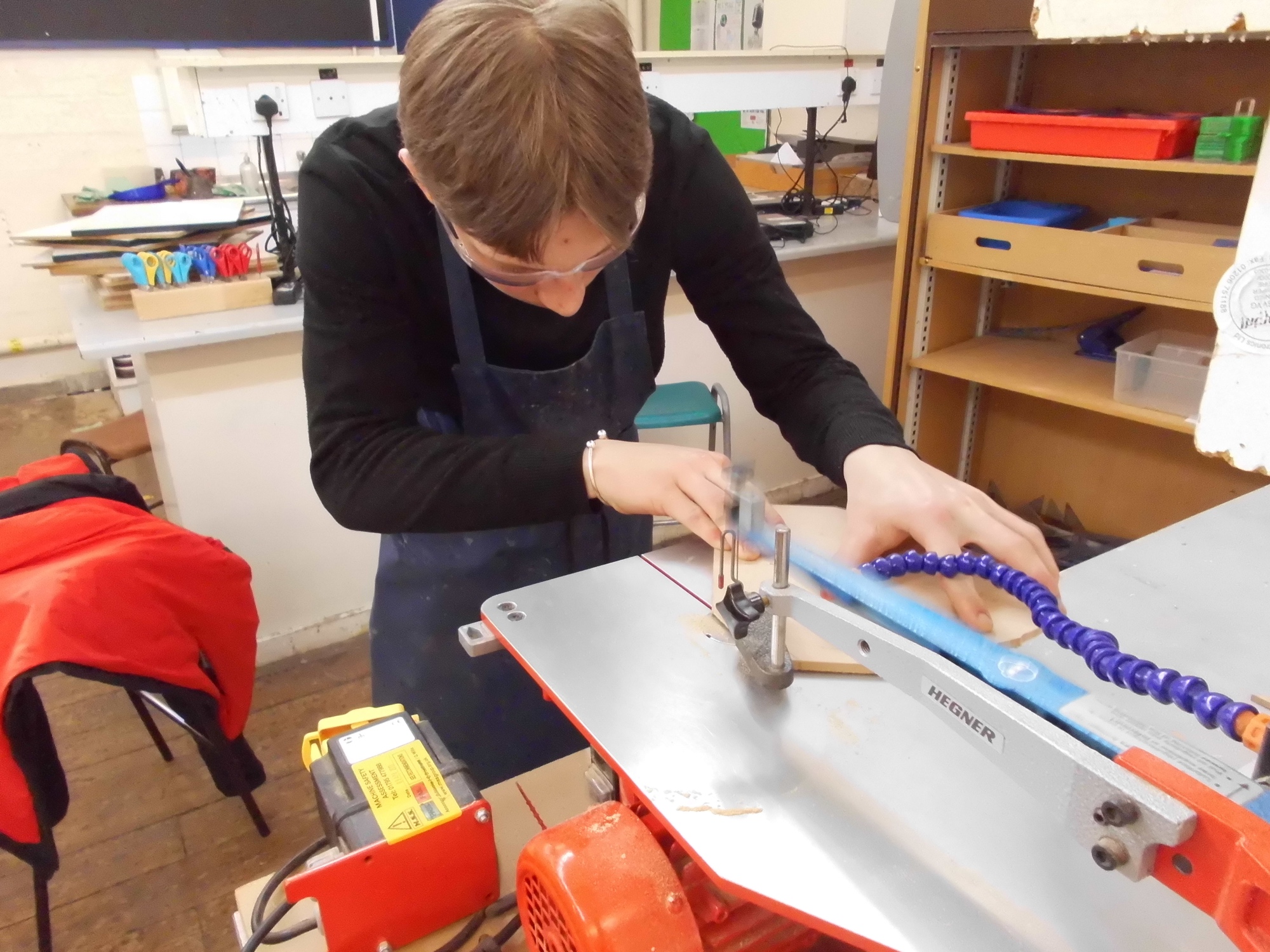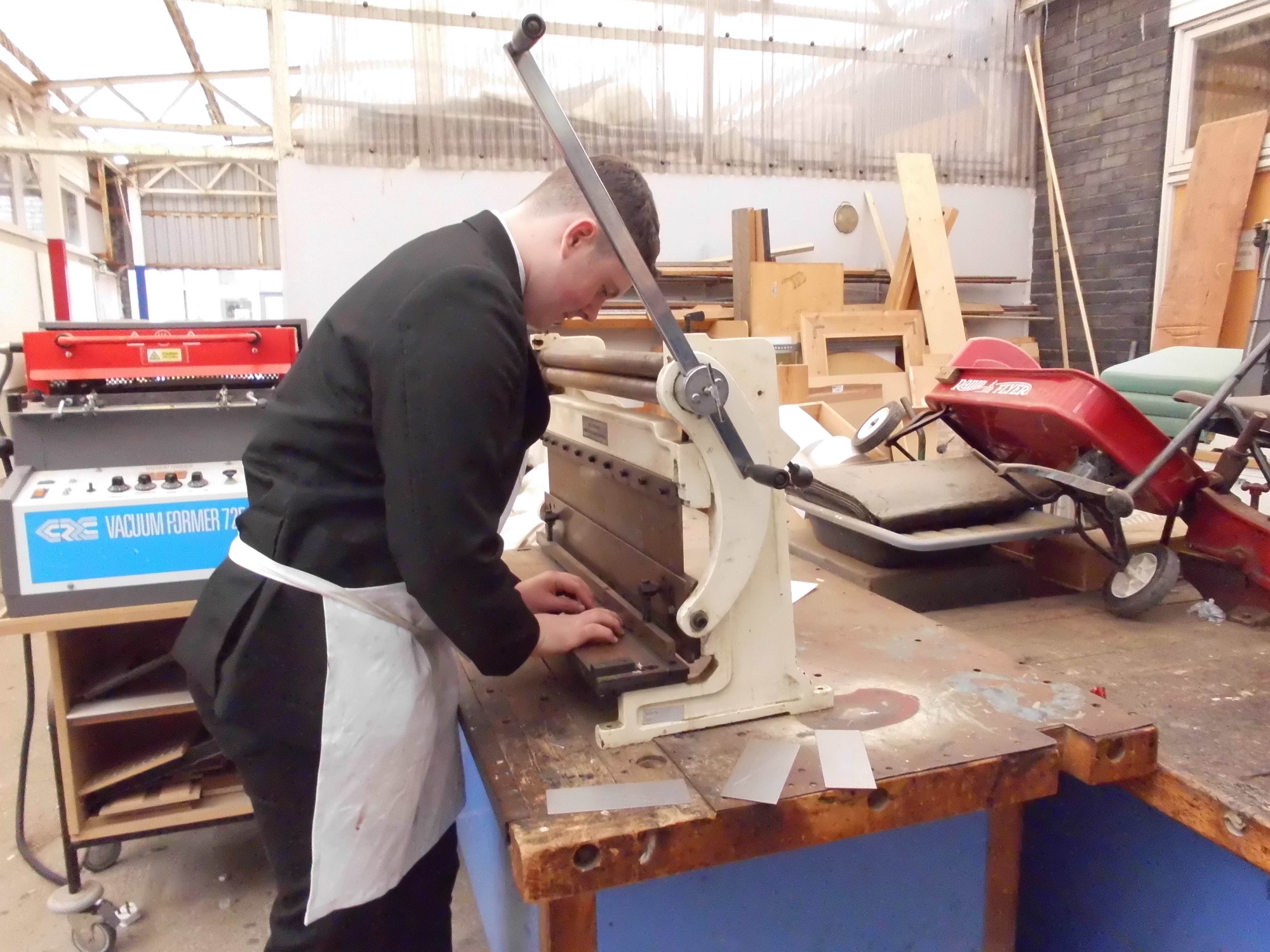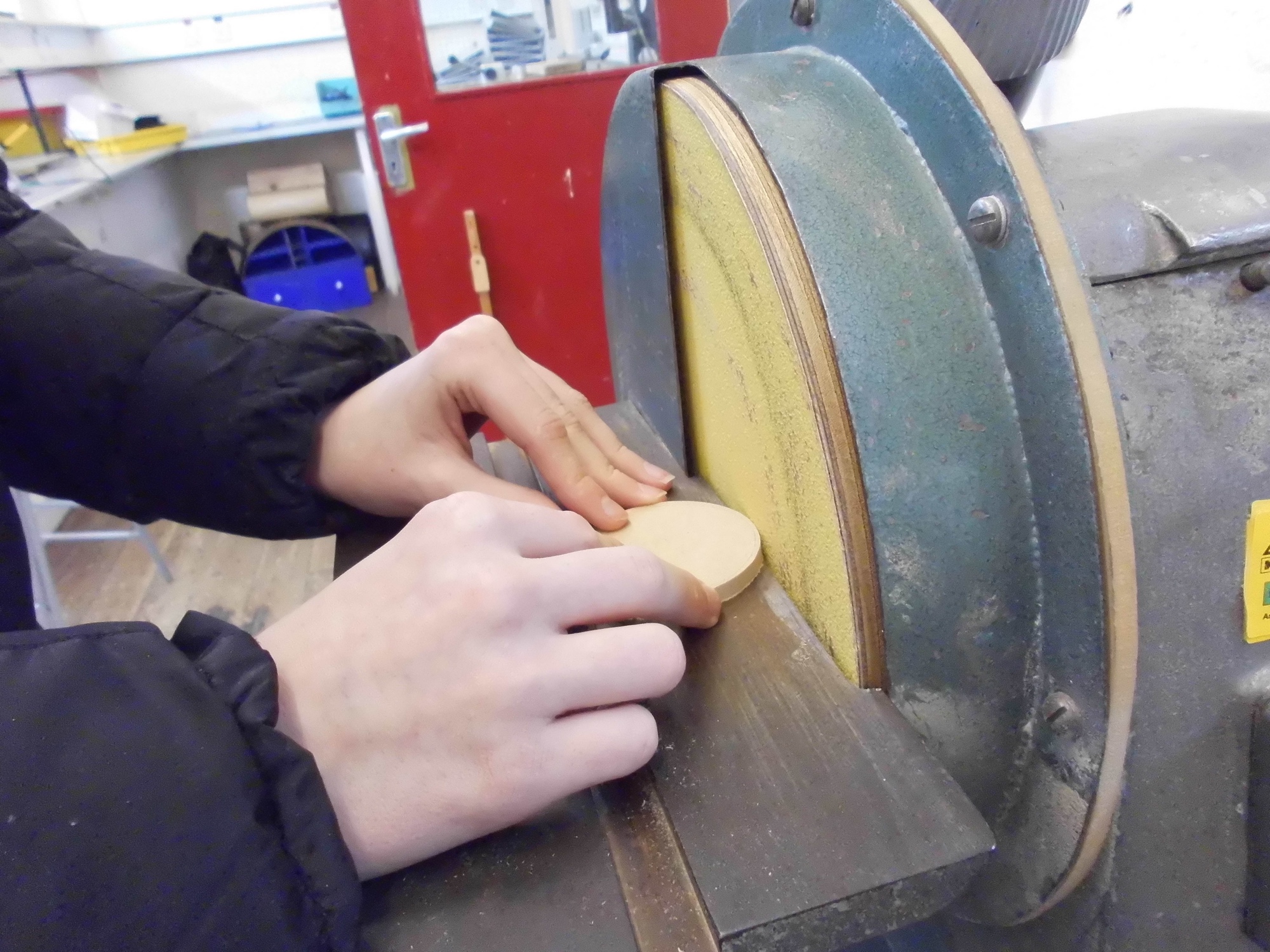Design and Technology
Curriculum Leader: Ms L McConville - mcconvillel@saintgeorges.kent.sch.uk
Creativity is allowing yourself to make mistakes. Design is knowing which ones to keep
scott adams - cartoonist
Design and Technology has been designed to prepare students to participate confidently and successfully in an increasingly technological world and to understand the importance and impact Design Technology has on everyday life and the wider world.
Pupils undertaking this course will develop a broad knowledge of material categories, manufacturing processes, new technologies and practical skills. The knowledge and skills learnt will then enable learners to design, develop and make functional prototypes for a wide and challenging range of real-life contexts. This qualification will encourage learners to develop their design and thinking skills to overcome daily problems and expose them to the current developments and opportunities that exist in the creative, manufacturing and engineering industries. Additionally, learners will need to apply their understanding of the sciences and maths in a design and technology context.
View our Learning Journey for Design and Technology here
Intent
The ethos of the Design Technology department can be described as wanting students to be able to approach a diverse range of design problems with an open-minded and experimental approach that underscores the concept of development being more important than the outcome. This is structured through a framework we refer to as the “design process” and can be used for projects as different as a pen holder design to a moon landing unit.

Implementation

It is delivered through the use of technologies ranging from a 2H pencil to an industry-standard laser cutter. Alongside these extremes are the normal hand tools and machinery that would be expected in any department, but supported by traditional machinery such as wood and metal lathes that are often deemed outdated by other schools. We believe that this sort of technology still has its worth and that more traditional skills are often the bedrock of a good technological education.
We ensure that SEND and disadvantaged children are given the necessary support in class to access the Curriculum fully and that equal opportunities are given to all.
Impact
Pupils should be able to identify how they may be able to develop skills further in light of the understanding gained from the Design and Making processes. Pupils gain confidence and competence using a range of tools and equipment to form and finish components and understand the properties of different materials.

Design and Technology at Key Stage 3 (KS3)
Fortnightly Lessons:
Year 7 – 3 lessons*
Year 8 – 3 lessons*
Year 9 - 5 hours (a term)
KS3 Design and Technology lessons take place over two distinct areas – Design Technology and Food and Nutrition.
*Students will rotate between these two areas in January each year.
These two areas at KS3 provide a methodology through which pupils can recognise issues, develop solutions and manufacture artefacts/products to address a specific need.
| Year 7 | Year 8 | Year 9 |
|---|---|---|
|
(a) Design: Provides a framework within which pupils explore a Brief or recognisable task or problem that needs to be addressed with the manufacture of an object/product/outcome. |
(a) Design: Provides a framework within which pupils explore a Brief or recognisable task or problem that needs to be addressed with the manufacture of an object/product/outcome. |
DT is offered as a taster session throughout Year 9 Pathways. |
|
(b) Making: During the course of KS3 pupils gain confidence and competence using a range of tools and equipment to form and finish components and understand the properties of different materials. In the process pupils are expected to take on responsibility for their personal Health and Safety within the workshop/kitchen environment showing good practice using tools and equipment and recognising potential hazards affecting their working environment. |
(b) Making: During the course of KS3 pupils gain confidence and competence using a range of tools and equipment to form and finish components and understand the properties of different materials. In the process pupils are expected to take on responsibility for their personal Health and Safety within the workshop/kitchen environment showing good practice using tools and equipment and recognising potential hazards affecting their working environment. |
|
|
(c) Test: Completed artefacts/outcomes are assessed against the original Brief to see if they meet the needs identified. This assessment may take the form of a pupil’s self-assessment of the artefact or peer group assessment as a means of gaining an understanding of the effectiveness of the design. Finally, pupils should be able to identify how they may be able to develop skills further in light of the understanding gained from the Design and Making processes. |
(c) Test: Completed artefacts/outcomes are assessed against the original Brief to see if they meet the needs identified. This assessment may take the form of a pupil’s self-assessment of the artefact or peer group assessment as a means of gaining an understanding of the effectiveness of the design. Finally, pupils should be able to identify how they may be able to develop skills further in light of the understanding gained from the Design and Making processes. |
Design and Technology in Key Stage 4 (KS4)
Fortnightly Lessons:
Year 10 – 5 lessons
Year 11 – 5 lessons
The GCSE Design and Technology offers a foundation in the principles and iterative design practices of various 21st-century design and manufacturing industries. The qualification offers flexibility in the approaches students use to apply knowledge and understanding of these practices and principles when designing and making prototypes that solve real and relevant problems. Area of study includes:
- New and Emerging Technologies
- Energy Generation and Storage
- Developments in New Materials
- Systems Approach to Designing
- Mechanical Devices
- Materials and Working Properties
- Special Technical Principles
GCSE Assessments
| Paper 1: Principles of design and technology (50%) | NEA: Interactive Design Challenge (50%) |
|---|---|
|
Written Assessment. 2 Hours. |
Approximately 30 - 35 Hours. |
|
The question paper will be split into 3 sections;
A minimum of 15% of the paper will assess learners’ mathematical skills and a further 10% on science skills, as applied within a Design Technology context. AQA exam paper taken in May/June of Year 11. |
This starts in Term 6 of Year 10 and continues into Year 11. The NEA breaks down into 6 assessment objectives;
As an outcome of their challenge, learners will produce a chronological portfolio and one final prototype based on a selected contextual challenge. The contextual challenges will be released by the exam board in the June of the student’s year 10. |
Exam Board: AQA GCSE Design and Technology
Design and Technology Future Paths
This qualification could potentially serve as the starting point for a wide range of design-orientated professions, for example; product design, interior design, and architecture.
Extra Resources
Revision Materials
Students are encouraged to get the following to aid preparation for the external exam (these are available from the school).
- GCSE Design & Technology AQA Revision Guide
- GCSE Design & Technology AQA Revision Question Cards
- Exploring Food and Nutrition for KS3 by Yvonne Mackey and Bev Saunder
